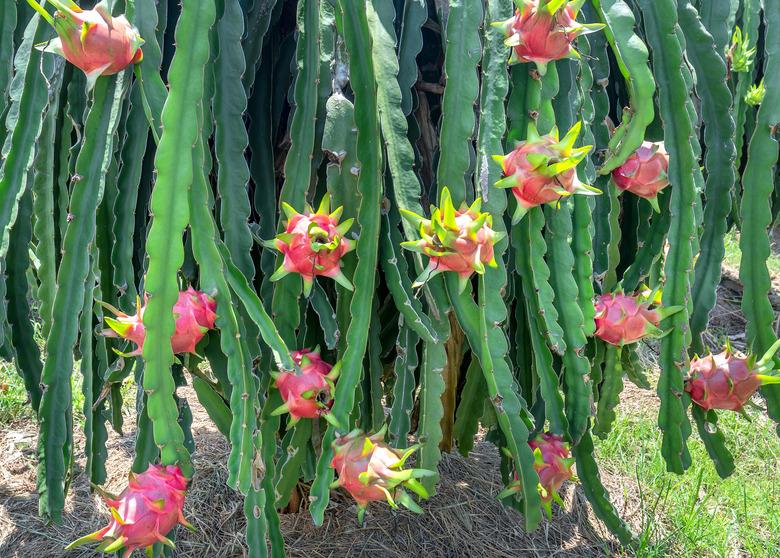How To Grow Dragon Fruit From Cuttings
We may receive a commission on purchases made from links.
There are many unusual fruits in the world, but few are more exotic than the weird and wonderful dragon fruit. This tropical, vining plant is a cactus and native to the tropical and subtropical regions of Central and South America. Though it is possible to grow dragon fruit plants from its seeds, the faster method of getting a fruiting plant is to propagate the dragon fruit from cuttings.
Get to Know the Dragon Fruit
Get to Know the Dragon Fruit
The dragon fruit plant (Hylocereus undatus) is also known as strawberry pear, pitaya, or pitahaya. It is a tropical plant that thrives outdoors only in U.S. Department of Agriculture plant hardiness zones 10a through 11, although it can grow in lower zones in a greenhouse. The plant's stem is triangular, jointed, and made up of many segments. It produces aerial roots that it uses to climb.
Mature plants produce flowers and fruits that are both dramatic and beautiful. The bell-shaped flowers open only at night, but they are as showy as flowers can be, fragrant, and large (up to 14 inches long and 9 inches wide). They are pink or white, with ivory stamens and lobed stigmas. Pollinated flowers produce fruit that is dark pink and scaly on the outside, pale and freckled with tiny seeds on the inside.
Propagate the Dragon Fruit Plant
Propagate the Dragon Fruit Plant
Each dragon fruit contains enough dragon fruit seed to start a commercial orchard. The seeds propagate readily in about three weeks, but the process of moving from a seedling to a fruit-producing plant is lengthy: up to seven years. That's why seeding is rarely done.
Most dragon fruit are propagated by asexual means, that is, rooting plant cuttings. This method is extremely effective and can produce mature, fruit-bearing plants in less than a year after rooting. Four-year-old cuttings can produce up to 220 pounds of fruit a year for up to 20 years, which is the average life of these plants.
Grow Dragon Fruit From Cuttings
Grow Dragon Fruit From Cuttings
If you have access to a healthy dragon fruit plant, you may decide to propagate it from cuttings. The first step is to take as many stem cuttings as you wish to propagate. It's best to use entire stem segments of 6 to 15 inches long rather than smaller sections. Use a clean, sterilized knife and take each cutting by making a slanted, 45-degree cut at the stem base. Dip the cut end of each cutting into a powder fungicide; then store them in a dry, dark spot to dry and heal for a week or so.
Once that time is up, the cuttings are ready to be planted in pots filled with a well-drained medium. Dip the cut end of a cutting in rooting hormone; then insert that end at least 2 to 3 inches into the soil. Stake the cutting to help it stay upright while it grows roots. Water lightly every few weeks. Cuttings grow quickly once planted, up to an inch or more every day. After four months, the cutting should have a strong enough root system to be ready for garden planting.
